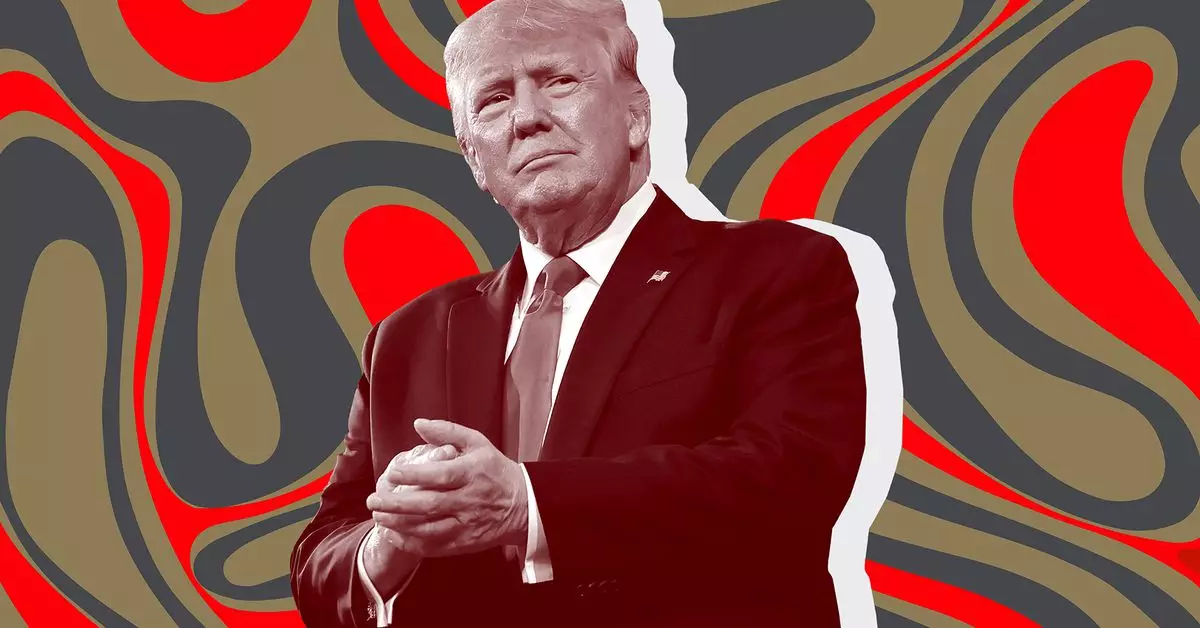Recently, the cryptocurrency landscape witnessed a notable yet contentious development with the launch of the Trump-backed World Liberty Financial token, WLFI. Spearheaded by co-founder Zach Folkman, the preeminent sale kicked off on a Tuesday, igniting widespread interest that quickly spiraled into a chaos of technical failures. This incident raises pertinent questions about the implications of celebrity endorsements in crypto ventures, the efficacy of decentralized finance (DeFi), and the broader access limitations imposed by regulatory frameworks.
World Liberty Financial marketed its token sale launch as an innovation in financial inclusion, claiming to assist those traditionally excluded from banking services. However, the ambitious rollout encountered immediate challenges, particularly a website crash attributed to an avalanche of traffic — with over 72 million unique visitors flooding the site in the first hour alone, as reported by advisor Sandy Peng. This unforeseen interest reflects a fervent desire among potential investors but also casts doubt on the preparedness of the team behind the project.
Despite the initial technical mishap, the figures released later by World Liberty Financial were impressive—532 million tokens of the projected 20 billion were sold. Yet, amid the impressive sales figures, blockchain analytics from Etherscan revealed a sobering reality: only 5,317 unique wallets held the WLFI token. This statistic reveals a critical dissonance between hype and participation, indicating a possibly limited reach, despite extensive marketing efforts pre-launch.
While touted as a venture meant to democratize finance, the intended investors for WLFI are strictly limited to accredited individuals—those with considerable financial means and net worth. Such a criterion, set by the U.S. Securities and Exchange Commission (SEC), implies that the very demographic this project claims to uplift remains excluded from participation. The notion of financial inclusivity seems to falter under the weight of regulatory requirements that favor wealthier individuals, thus perpetuating existing disparities in financial access.
This exclusion raises ethical concerns about the intentions behind the project. Are financial instruments framed as tools for the marginalized inherently flawed if they predominantly serve a privileged few? Moreover, the focus on institutional compliance rather than a grassroots approach contradicts the founding ethos of many cryptocurrency projects, which often center around the principle of decentralization accessible to all.
The Role of Celebrity and Its Implications
The project’s association with Donald Trump furnishes it with both visibility and controversy. Notably, Trump’s branding as the “chief crypto associate” and the prominent roles assigned to his sons—Eric, Donald Trump Jr., and Barron—as Web3 Ambassadors—distill concerns surrounding the conflation of entertainment with serious financial instruments. The leveraging of celebrity status raises crucial considerations about the pressuring influence individuals may exert on investor behavior and market sentiment.
Moreover, soaring prices based on celebrity affiliations have historically led to volatility and uncertainty in the crypto market. Will this project follow suit, creating inflated expectations only to crash under the weight of reality?
The launch of World Liberty Financial heralds potential innovations in the cryptocurrency ecosystem, but it also underscores the challenges that lie ahead. The juxtaposition of idealistic mission statements aimed at enhancing financial inclusion against a backdrop of regulatory exclusivity raises intricate questions about the true accessibility of such platforms.
As this financial mechanism evolves, stakeholders must remain vigilant regarding the ramifications of such ventures. Industry players, investors, and regulatory bodies alike must collaborate to navigate what could be an unpredictable but potentially transformative new chapter in financial technology. For now, the trajectory of WLFI remains uncertain—a blend of aspiration and caution worthy of continuous scrutiny.

